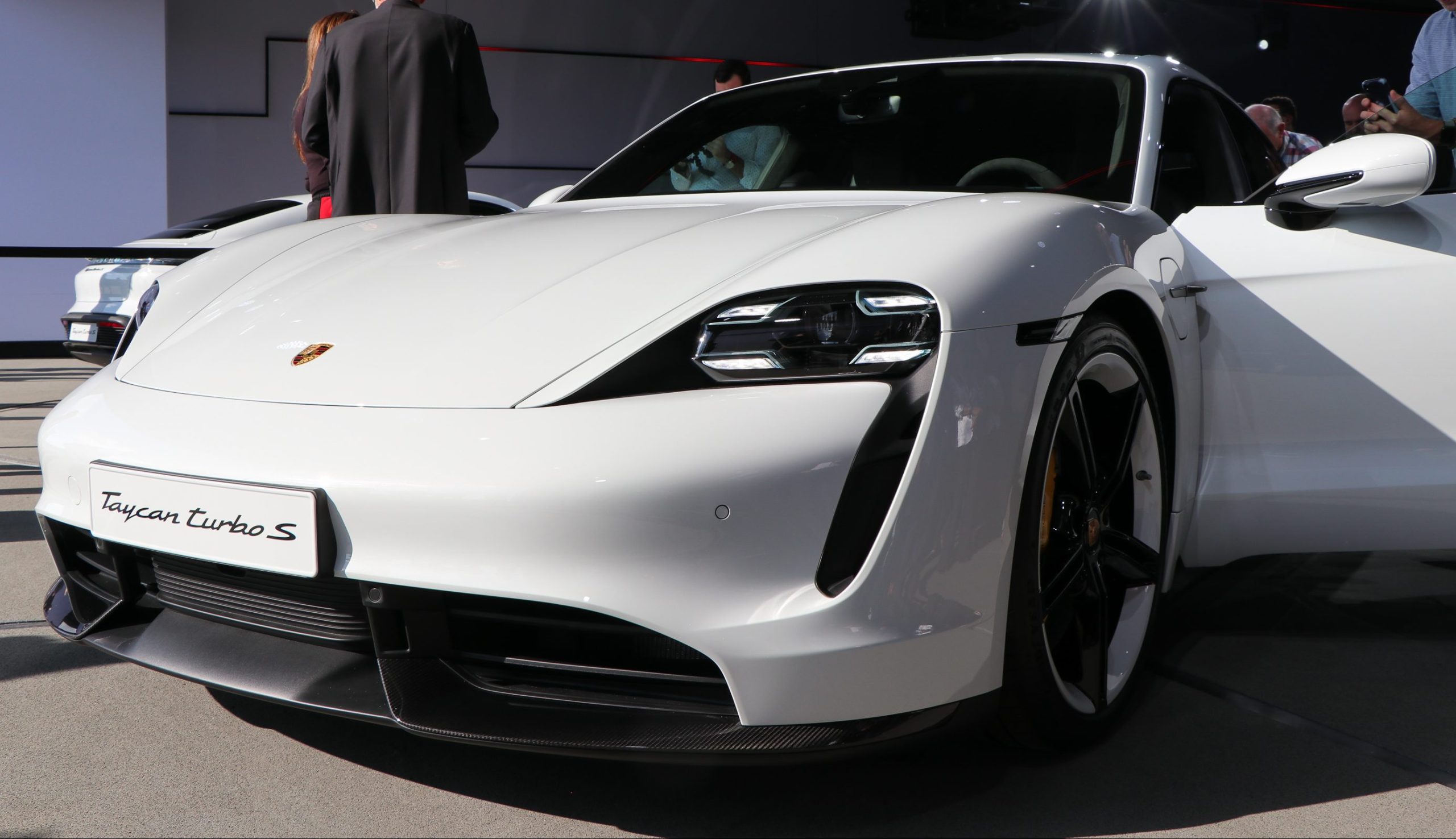
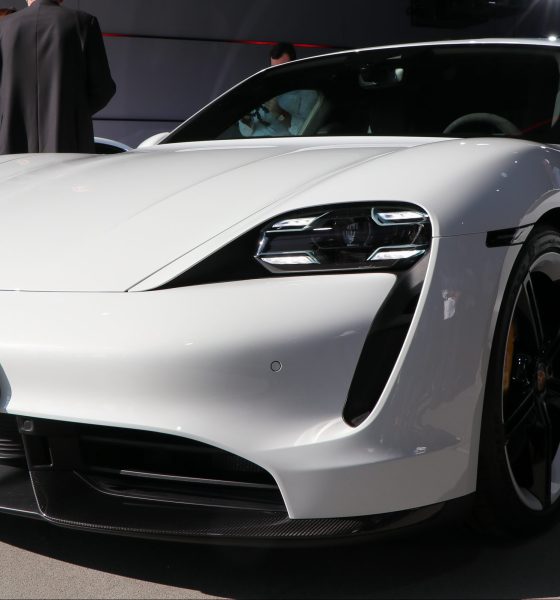
News
Porsche Taycan isn’t supposed to be a Tesla. Stop it.
Our tryst was short but, truth be told, I, a very happy Tesla owner, haven’t stopped thinking about the Porsche Taycan ever since the day we shared something special together.
It was a day of passion, driven by irrational thinking. Under the guise of a regular four-door sedan whose interior was garbed in strategically placed dark strips of cloth – clearly aimed at hiding the wolf within – it was soon obvious that I was no match for this beast.
“Do you want another go?”
It was an emphatic “no” from me to Porsche’s Platform Director for the Taycan, Bernd Propfe, as I climbed out of a production-ready Turbo S mule, and made every attempt to fight back obvious signs of nausea mixed with an overdose of adrenaline-induced shakes. Having just experienced a series of 720-degree donuts, high-speed drifts, 0-60 mph blasts in 2.6 seconds, followed by what can only be described as multiple time attack sessions on Porsche’s 1.6-mile circuit in Atlanta, the last thing I needed was to hear anyone belabor the point of repeatable performance. I get it. My stomach gets it.
It’s now two weeks later, and the taste of my Salisbury steak that I forcibly held in from lunch that day is as familiar as Taycan’s curvy, sleek and slightly bulbous contours that Porsche birthed to the world.
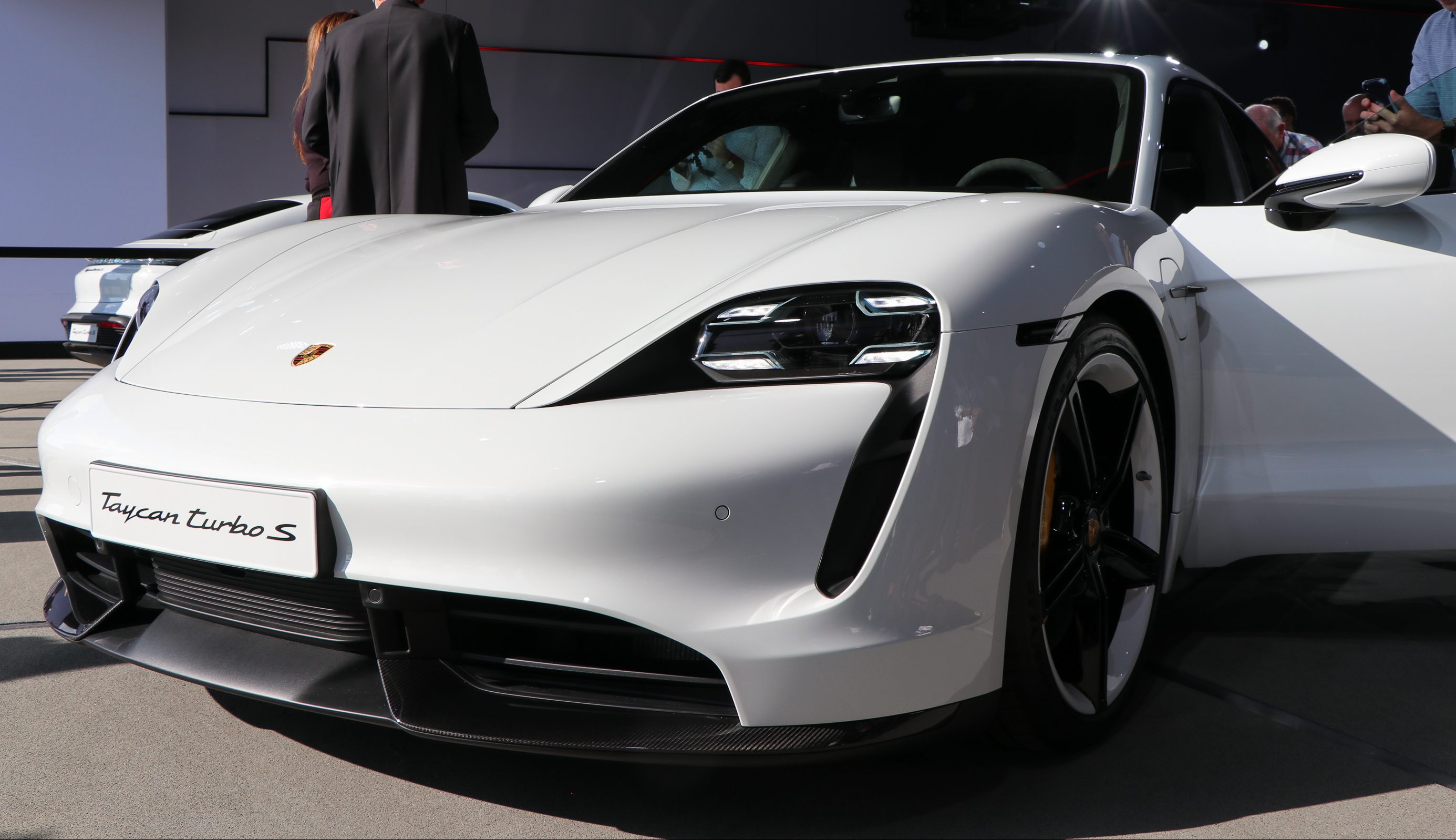
The Porsche Taycan. (Photo: Sean Mitchell/Teslarati)
The Taycan checks all of the boxes for what an all-electric, high-performance sedan is expected to be. Acceleration on par with Tesla? Check. Over-the-air software updates (like Tesla)? Check. Brand prestige (like Tesla)? Check. And anything not like Tesla, we know solicits ten pages of dialogue from the online vigilante.
And that’s where the line should be drawn.
First, let’s clear the air by saying that I love everything Tesla has done for the automotive industry and beyond. As a three-time Tesla owner with Ludicrous as my daily driving mode, a Tesla solar customer, and the guy greasing the wheels here at Teslarati, I’d say I can be as much of a supporter of Elon Musk and Tesla as the most vocal fanboi. But let’s also take the blinders off, boys and girls, and take a look at the bigger picture.
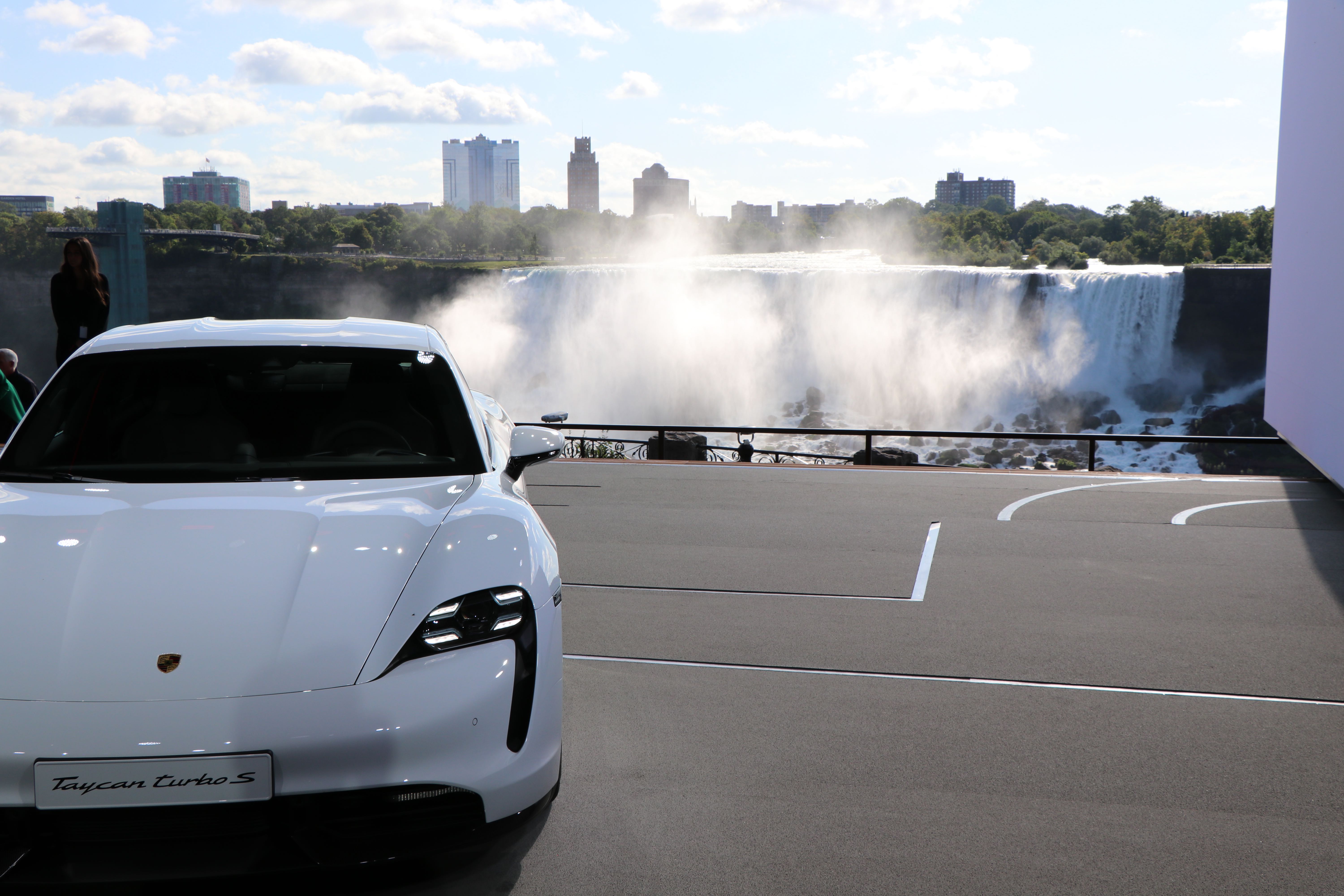
Porsche Taycan unveiling in North America on September 4, 2019. (Photo: Sean Mitchell/Teslarati)
Porsche has just released arguably the most important car in its history. A legacy automaker, whose iconic 911 has seen over 50 years in production and over 1 million units produced. An automaker that’s willing to go out on a limb and invest billions into the development of its first all-electric high-performance sedan to compete in a market that Tesla unequivocably dominates in. Unwavering to shareholder pressures to minimize disruption to the company’s biggest conventionally powered moneymakers, Porsche has remained focus on building products to support an electric future – a risk that many other automakers aren’t willing to take yet.
This should be celebrated. Porsche Taycan should be celebrated. The extension of Tesla’s electric roadway by another automaker should be celebrated.
After all, isn’t Tesla’s mission to accelerate the world’s transition to sustainable energy? I bet Tesla CEO Elon Musk himself would much rather see the Taycan in the market than not. It was he who once noted, “It’s a good thing,” referring to BMW’s entry into the market with the i3, “They need to bring it to market and keep iterating and improving and make better and better electric cars, and that’s what’s going to result in humanity achieving a sustainable transport future. I wish it was growing faster than it is.”
Still, the community is quick to point out the Taycan’s slower 0-60 mph time of 2.6 seconds versus Tesla Model S Performance’s 2.4 second time. Combined with the Taycan’s much higher price point that rivals that of some home mortgages, its lesser 280-mile WLTP-rated range versus Tesla’s 345-mile EPA-rated range, and it becomes instant social media fodder for a highlight-reel knockout that derails the entire mission.
But here’s the thing, Porsche never set out to build an affordable EV, as fellow Tesla owner and long-time EVangelist Dennis Pascual reminds us. That’s not their audience. And their audience may not realize the immense value of having up to 370-miles of range like the Model S and access to a vast Supercharger network. For many, it will be their second or third Porsche but first foray into the world of EVs. Having a familiar gauge cluster, albeit in digital form, and driving experience that they’ve been accustomed to is where these owners will find solace with the Taycan.
Porsche’s target buyer also isn’t one that balks at the idea of engaging regenerative braking through a traditional two-pedal driving style. In fact, it’s embraced. With massive 10-piston calipers up front and track-ready ceramic brakes ready to bite, there’s no mistaking the Taycan to be anything less than a driver’s car with Nürburgring roots.
Configuring a Taycan online, as I found out, was a strength-training exercise for decision paralysis. Everything can be customized.
Must have personalized door sill guards? Porsche has that for you. What material? Black or aluminum? Great. Now, would you like that illuminated? No problem! By the way, did you mean standard aluminum or brushed aluminum?
Tesla’s configuration philosophy: do you want Black interior or Black and White interior? Done.
Porsche’s seemingly endless assortment of options is every bit appreciated and expected by luxury car buyers, as it is daunting for the average Tesla consumer who’s accustomed to simplicity.
My particular Taycan Turbo S build started from a base $180k and quickly skyrocketed to over $240k after tacking on $60k in options. At nearly a quarter-million dollars, we’re in exotic car territory.
Porsche isn’t appealing to the same audience as Tesla. Different strokes for different folks.
The bottom line? The Porsche Taycan isn’t supposed to be a Tesla. And that’s a great thing.
If someone wants to spend their money on this #EV instead of an ICE… I'm cool with it… Still supports the mission of Tesla and of all #rEVolutionaries to get folks into an #EV let's not get into a circular firing squad against EVs, not everyone wants a Tesla
— Dennis Pascual (@dennis_p) September 5, 2019

News
Czech Deputy excited for Tesla FSD, hints at Transport Committee review
The ANO party lawmaker shared his thoughts about FSD in a post on social media platform X.
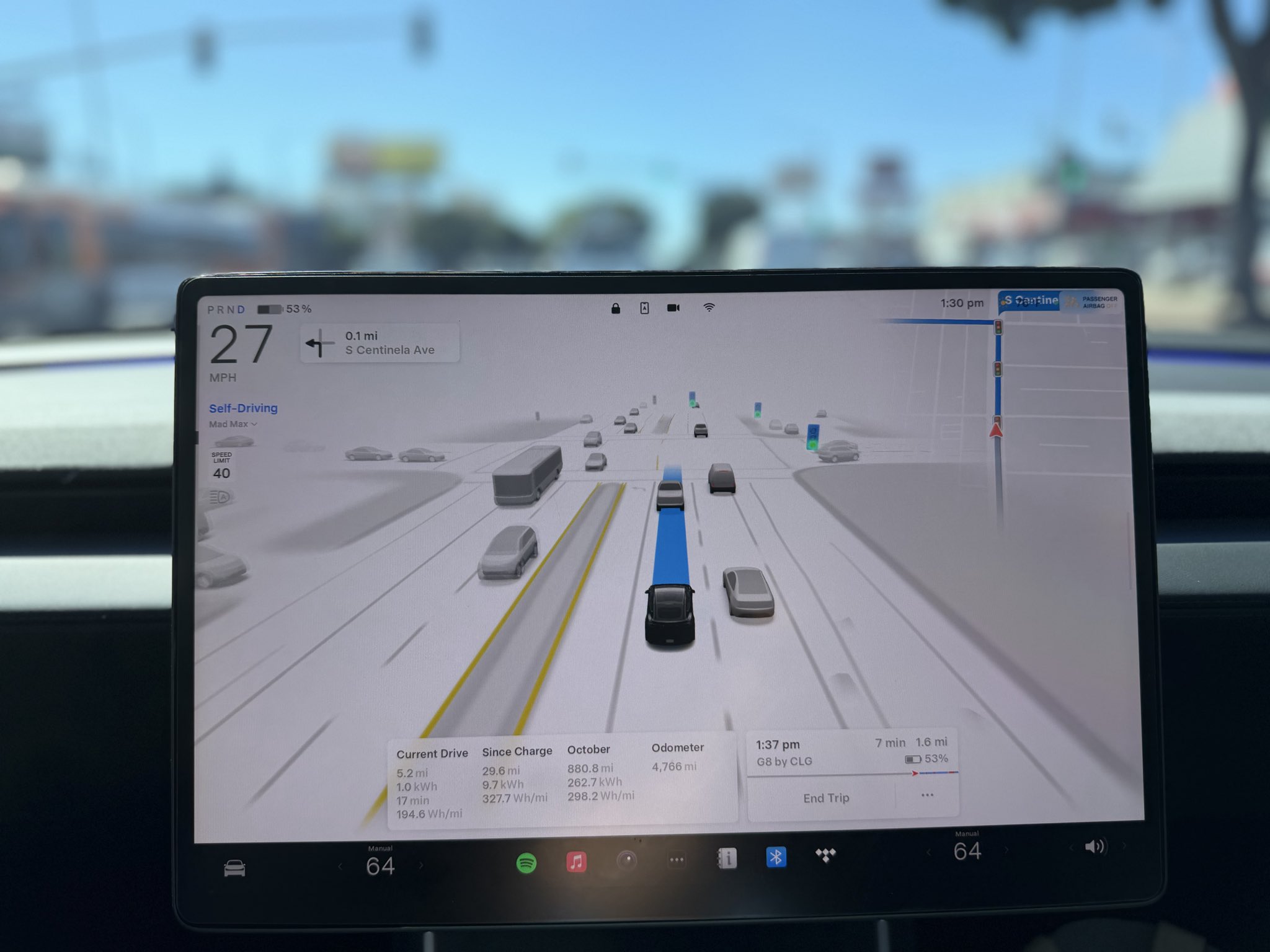
Martin Kolovratník, a Czech Republic Chamber of Deputies member, has expressed his excitement for Tesla’s Full Self-Driving (FSD) after an apparent constituent called for a quick approval for the advanced safety system.
The ANO party lawmaker, who drives both diesel and EV, shared his thoughts about the matter in a post on social media platform X.
The official’s initial statements
Kolovratník kicked off the exchange with a post outlining his coalition’s efforts to scrap highway toll exemptions for electric vehicles and plug-ins starting in 2027.
“Times have changed. Electric vehicles are no longer a fringe technology, but a full-fledged part of operations. And if someone uses the highway network, they should follow the same rules as everyone else. That’s the basis of fairness,” he wrote.
He emphasized equity over ideology, noting his personal mix of diesel and electric driving. “For this reason, there is no reason to continue favoring one technology at the expense of another… It’s not about ideology, it’s about equal conditions. That’s why we clearly agreed within the new coalition: the exemption for electric vehicles and plug-ins will end in 2027. The decision is predictable, understandable, and economically sound.”
Tesla FSD enthusiasm
The conversation pivoted to Tesla’s FSD when X user @robotinreallife, who seems to be one of the official’s constituents, replied that other matters are more important than ending highway exemptions for EVs.
“I’m happy to pay for the highway, but I have a question about a much more fundamental matter: The Netherlands will approve the operation of Tesla FSD in February 26, a technology that has been proven to reduce accidents. The Czech Republic has the option to immediately recognize this certification. Do you plan to support this step so that we don’t unnecessarily delay?” the X user asked.
Kolovratník responded promptly, sharing his own excitement for the upcoming rollout of FSD. “I know about it. I like it and it seems interesting to me. Once we set up the committees and subcommittees, we’ll open it right away in that transport one. Thanks for the tip, I’ll deliver the report,” the official noted in his reply on X.
Kolovratník’s nod to FSD hints at the system’s potentially smooth rollout to Czechia in the coming year. With the Netherlands possibly greenlighting FSD (Supervised) in early 2026, Kolovratník’s commitment could accelerate cross-border certification, boosting FSD’s foray into Europe by a notable margin.
News
Tesla Model 3 named New Zealand’s best passenger car of 2025
Tesla flipped the switch on Full Self-Driving (Supervised) in September, turning every Model 3 and Model Y into New Zealand’s most advanced production car overnight.

The refreshed Tesla Model 3 has won the DRIVEN Car Guide AA Insurance NZ Car of the Year 2025 award in the Passenger Car category, beating all traditional and electric rivals.
Judges praised the all-electric sedan’s driving dynamics, value-packed EV tech, and the game-changing addition of Full Self-Driving (Supervised) that went live in New Zealand this September.
Why the Model 3 clinched the crown
DRIVEN admitted they were late to the “Highland” party because the updated sedan arrived in New Zealand as a 2024 model, just before the new Model Y stole the headlines. Yet two things forced a re-evaluation this year.
First, experiencing the new Model Y reminded testers how many big upgrades originated in the Model 3, such as the smoother ride, quieter cabin, ventilated seats, rear touchscreen, and stalk-less minimalist interior. Second, and far more importantly, Tesla flipped the switch on Full Self-Driving (Supervised) in September, turning every Model 3 and Model Y into New Zealand’s most advanced production car overnight.
FSD changes everything for Kiwi buyers
The publication called the entry-level rear-wheel-drive version “good to drive and represents a lot of EV technology for the money,” but highlighted that FSD elevates it into another league. “Make no mistake, despite the ‘Supervised’ bit in the name that requires you to remain ready to take control, it’s autonomous and very capable in some surprisingly tricky scenarios,” the review stated.
At NZ$11,400, FSD is far from cheap, but Tesla also offers FSD (Supervised) on a $159 monthly subscription, making the tech accessible without the full upfront investment. That’s a game-changer, as it allows users to access the company’s most advanced system without forking over a huge amount of money.
News
Tesla starts rolling out FSD V14.2.1 to AI4 vehicles including Cybertruck
FSD V14.2.1 was released just about a week after the initial FSD V14.2 update was rolled out.

It appears that the Tesla AI team burned the midnight oil, allowing them to release FSD V14.2.1 on Thanksgiving. The update has been reported by Tesla owners with AI4 vehicles, as well as Cybertruck owners.
For the Tesla AI team, at least, it appears that work really does not stop.
FSD V14.2.1
Initial posts about FSD V14.2.1 were shared by Tesla owners on social media platform X. As per the Tesla owners, V14.2.1 appears to be a point update that’s designed to polish the features and capacities that have been available in FSD V14. A look at the release notes for FSD V14.2.1, however, shows that an extra line has been added.
“Camera visibility can lead to increased attention monitoring sensitivity.”
Whether this could lead to more drivers being alerted to pay attention to the roads more remains to be seen. This would likely become evident as soon as the first batch of videos from Tesla owners who received V14.21 start sharing their first drive impressions of the update. Despite the update being released on Thanksgiving, it would not be surprising if first impressions videos of FSD V14.2.1 are shared today, just the same.
Rapid FSD releases
What is rather interesting and impressive is the fact that FSD V14.2.1 was released just about a week after the initial FSD V14.2 update was rolled out. This bodes well for Tesla’s FSD users, especially since CEO Elon Musk has stated in the past that the V14.2 series will be for “widespread use.”
FSD V14 has so far received numerous positive reviews from Tesla owners, with numerous drivers noting that the system now drives better than most human drivers because it is cautious, confident, and considerate at the same time. The only question now, really, is if the V14.2 series does make it to the company’s wide FSD fleet, which is still populated by numerous HW3 vehicles.











